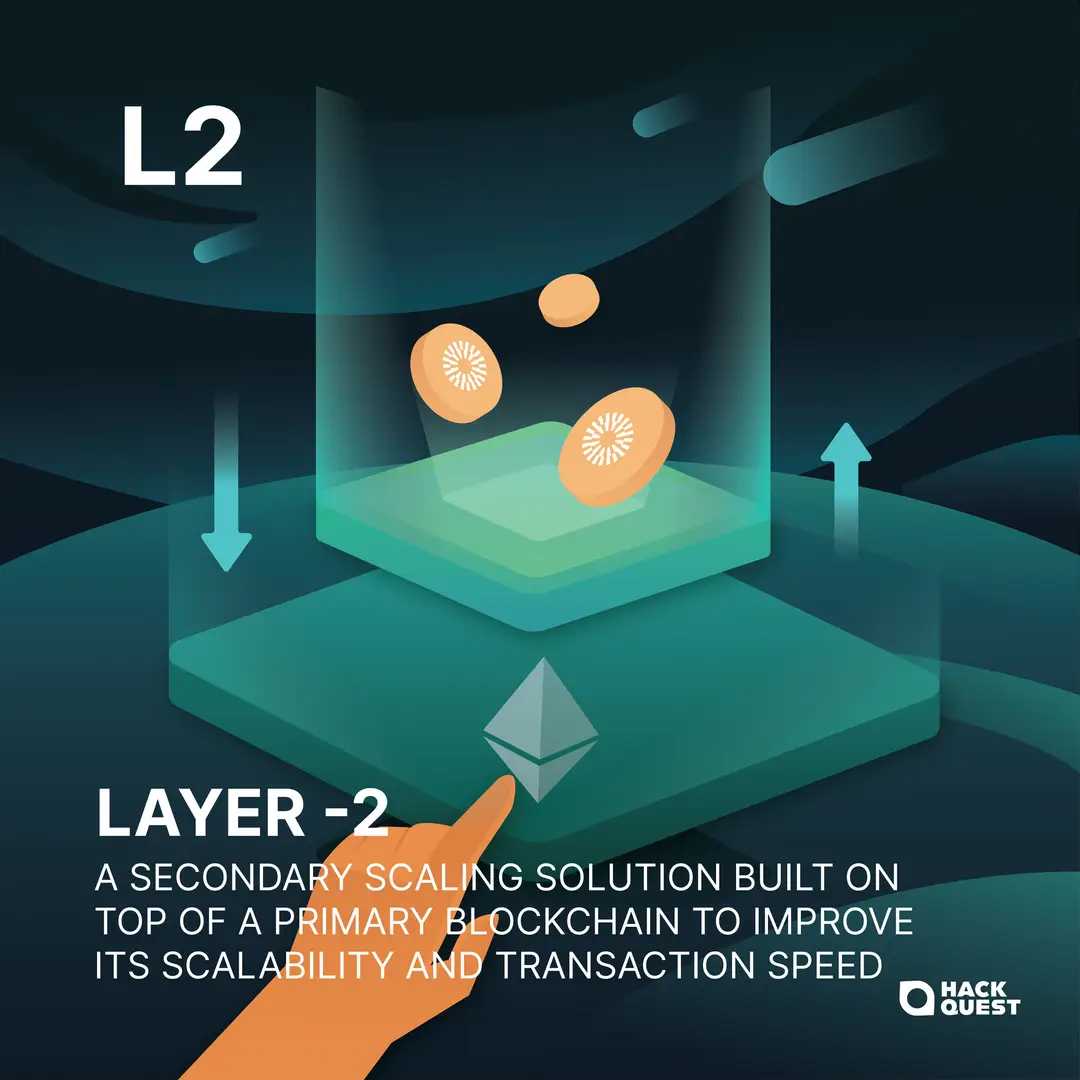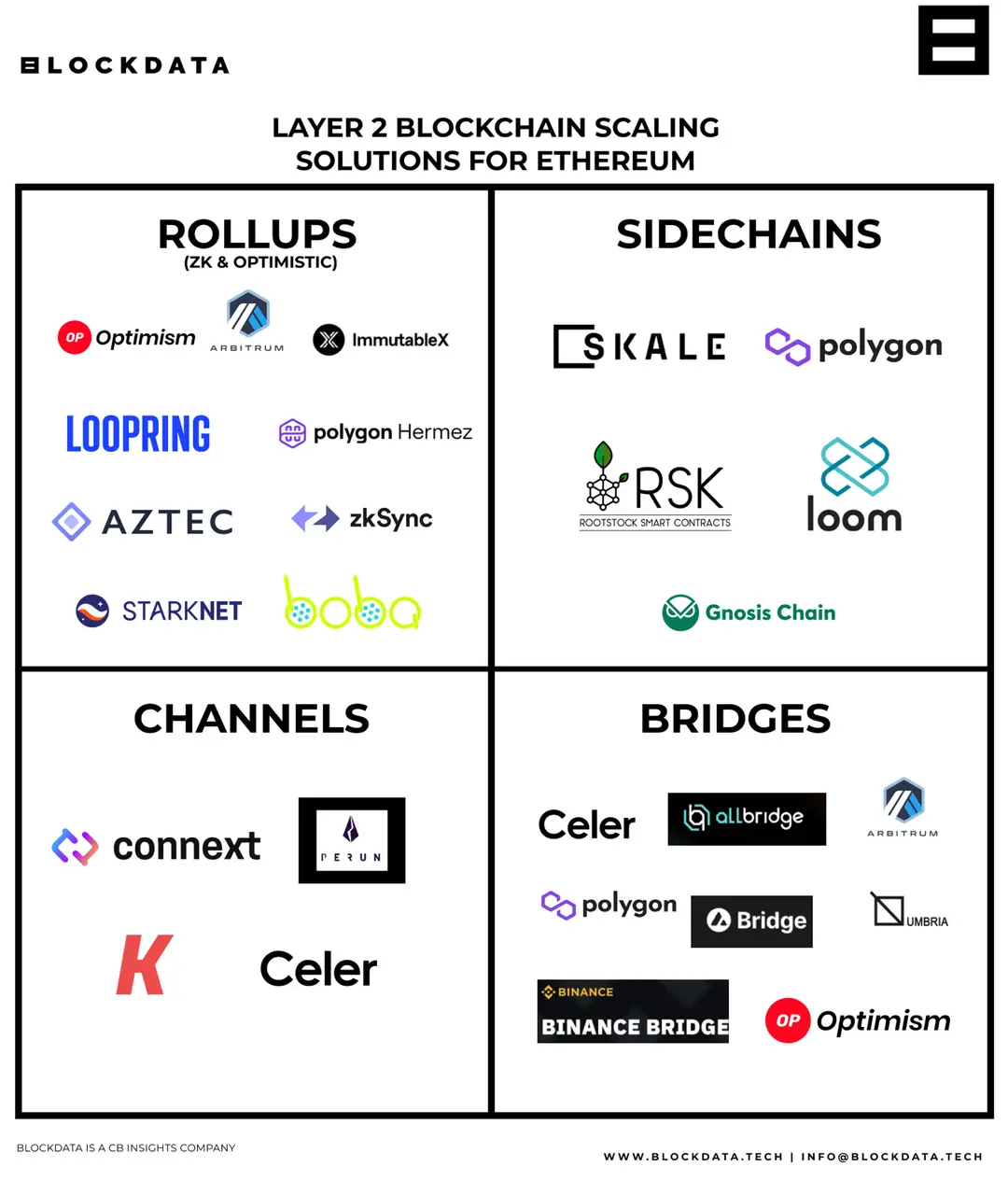返回
Layer 2
Basics
By HackQuest
Apr 2,20247 min readWelcome to the world of Web3, where cryptocurrencies, blockchain, and a unique culture converge. Entering the world of Web3 can be both thrilling and overwhelming, especially when faced with the seemingly cryptic language used by enthusiasts. Don't worry if you feel they sound like some secret codes, we are here to unravel their meaning in Web3 context. In this article, we are going to introduce [Layer 2].

What Does 'Lay 2' Mean?
Layer 2 refers to a secondary framework or protocol that is built on top of an existing blockchain system (the main chain or Layer 1). The primary purpose of Layer 2 solutions is to enhance the scalability and efficiency of the main chain without compromising on security or decentralization.
The Origin of Lay 2
As blockchain networks like Ethereum grew in popularity, they began to face significant scalability issues. The networks could only process a limited number of transactions per second, leading to congestion, high transaction fees, and slower confirmation times. To address these challenges without overhauling the core architecture of existing blockchains, developers started working on Layer 2 solutions that could offload some of the transactional load from the main chain.
How Does Layer 2 Work?
Mechanism: Layer 2 solutions work by taking transactions off the main blockchain (off-chain) for processing. Once processed, the aggregated results are then recorded on the main chain. This approach significantly reduces the burden on the main blockchain, allowing for faster transaction speeds and lower costs. There are several types of Layer 2 solutions, including:
State Channels
These are two-way communication channels between parties that enable them to conduct numerous transactions off-chain while still being secured by the main blockchain. Only the initial and final states of these transactions are recorded on the main chain.
Sidechains
These are independent blockchains that run parallel to the main chain and have their own consensus mechanisms. They are linked to the main chain, allowing for assets to be securely transferred between the two.
Rollups process and store transaction data off-chain but post transaction data back to the main chain. They come in two forms: Optimistic Rollups, which assume transactions are valid by default and allow for fraud proofs to challenge them, and Zero-Knowledge Rollups (ZK-Rollups), which provide cryptographic proof of the validity of transactions.
🚀
Check out: What is the meaning of Roll-up?

Source: CB Insights
Why is Layer 2 Important?
Scalability
By handling transactions off the main blockchain, Layer 2 solutions dramatically increase the network's capacity, allowing for thousands of transactions per second.
Reduced Costs
Processing transactions off-chain reduces the demand on the main blockchain, which in turn lowers transaction fees.
Enhanced User Experience
Faster transaction speeds and lower costs contribute to a better user experience, making blockchain applications more practical for everyday use.
Examples of Layer 2 in Use
A notable example of a Layer 2 solution is the Lightning Network for Bitcoin, which enables fast and low-cost transactions off the main Bitcoin blockchain. For Ethereum, Optimism and Arbitrum are examples of Optimistic Rollups, while zkSync is an example of a Zero-Knowledge Rollup, each aiming to enhance Ethereum's scalability and efficiency.
📢
Conclusion
Layer 2 solutions represent a critical innovation in the blockchain and Web3 space, offering a viable path to overcoming the scalability challenges faced by Layer 1 blockchains. By improving transaction speeds and reducing costs, Layer 2 technologies are making blockchain applications more accessible and practical for a wider range of uses. As the technology continues to evolve, Layer 2 solutions are set to play a pivotal role in the growth and adoption of blockchain technology.
If you would like to learn more about slang in Web3, let’s explore more in our HackQuest Web3 Glossary!